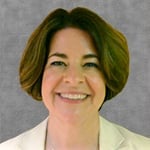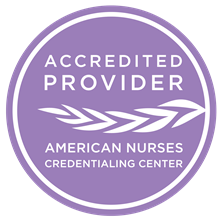As the CLNC® consultant my role was to educate. Because I successfully fulfilled this role, all but one of these cases has settled in the civil courts.
How I Used My Expertise as a Certified Legal Nurse Consultant to Create Order from Chaos
by Suzanne E. Arragg, RN, BSN, CDONA/LTC, CLNC

My experience as an infection control consultant for long term care and a director of nursing in a skilled nursing facility (SNF) has worked to my advantage as a CLNC® consultant. I know the inner workings of these facilities and can get into just about any nook and cranny of an SNF building. This expertise benefits my attorney-clients who often tell me, “Suzanne, get in there and find it!”
That’s exactly what I did when I had the opportunity to work on a group of 13 cases. The “Notorious 13” all came from one attorney-client representing one skilled nursing facility. The “ring leader” of the plaintiffs was a very vocal family member who believed one facility resident had received substandard care. Family members of other residents joined in her crusade, resulting in 13 separate civil suits. Naturally, the work load for the law firm was enormous, and chaos ensued.
The Interlocking Cases Required “Outside the Box” Investigating
The major allegations in the law suits included:
- Elder abuse
- Negligence
- Intentional infliction of emotional distress
- Fraud
- Pain and suffering
The overwhelming list went on and on and the plaintiffs were alleging that they were entitled to punitive damages. At first glance, I could have become emotionally involved and sided with the plaintiffs. But with the Institute’s training as my guide, I gave each complaint careful thought, and an overall theme became apparent: The families were not happy and wanted to be heard.
Once I received copies of the records from the facility, I rolled up my sleeves and dug in. I reviewed each and every page. I identified missing pages or documents; created flow charts, care grids and nutritional analyses; analyzed the pre-existing conditions; and provided a detailed summary and analysis of the medical record, complete with specific analysis relating to the significant care issues identified in each complaint. This was phase one of the investigation.
Phase two included conducting interviews and participating in depositions that were being taken to affirm or disprove the allegations in the complaints. This phase included talking with family members and residents who could communicate and were not cognitively impaired. The issues I investigated included staffing, personal hygiene, bruising, pressure sores and, of course, documentation.
My role was to educate the attorney about why nurses would or would not document certain events. I also identified standards of care and determined whether the staff had adhered or deviated from them.
On my visit to the facility, I assured the nurses of confidentiality and just started talking to them. I learned that the facility followed every recourse to achieve proper staffing levels, and that the department heads supported and assisted them to ensure the needs of the residents were met. The department heads could not be included in the staffing ratios. Of course, the national nursing shortage was also used as a defense. This kind of information is never found in a resident’s medical record. I gathered information to show that “reasonable care” was indeed provided.
As the CLNC consultant my role was to:
- Investigate beyond the chart
- Ask lots of questions
- See the situation from the point of view of both plaintiff and defense
- Draw reasonable conclusions
- Above all, educate
Because I successfully fulfilled this role, all but one of these cases has settled in the civil courts. The information I gathered proved priceless to my attorney-client. Naturally, the one case outstanding was that of the “ring leader” who initiated the “Notorious 13.”
Overwhelming Paperwork Demands an Organized Approach
Organization was paramount because of the volume of paperwork these 13 cases produced. We had to work fast to meet the insurance carrier’s and skilled nursing corporation’s deadlines. Unfortunately, we didn’t have time to think about systems to keep us organized.
Our team of three included the attorney and me along with his paralegal. But we needed more help. The three of us spent many sleepless nights and sacrificed time with our families. “Never again!” became our motto.
The lesson we learned was to take the time to work out a system for managing a large number of cases in a very short period of time. This system includes delegation of duties. We developed the following detailed procedure for future complicated or overlapping cases:
- Once a file is assigned, we visit the facility. During this initial visit:
- The CLNC consultant reviews the original record, prior to the coordinated arrival (on the same date) of the copy service.
- We search for missing documents.
- We obtain reports from DHS licensing and the certification survey and compliant visits along with any policies and procedures specific to the sentinel event or incident.
- We set up a meeting between the CLNC consultant and the administrator or director of nursing for a brief discussion of the event.
- We identify additional witnesses for interviewing on a later date, following our analysis of the medical record.
- The CLNC consultant returns to her office and cranks out the analysis, usually within 30 days. This often requires the assistance of CLNC subcontractors.
- The CLNC consultant meets with the attorney when the report is complete or to discuss the significant issues of the case, identify potential experts needed and develop phase two of the investigation.
- We schedule a second facility visit with the administrator in writing. The letter requests any additional documents needed, asks that certain individuals be made available and sometimes seeks contact information for individuals no longer employed by the facility.
- The CLNC consultant, along with the attorney, makes the second visit to interview all employees involved in the incident.
- The CLNC consultant prepares a second report and holds another meeting to develop phase three: mediation, arbitration or trial. The CLNC consultant assists the attorney in preparing for these proceedings as directed.
This procedure has proven valuable in every long term care case I have worked up since the “Notorious 13.” Not that we don’t go crazy sometimes, but this step-by-step system has truly made a difference between order and chaos for my CLNC business.
Click here for Memorable Case guidelines and thought starters.



